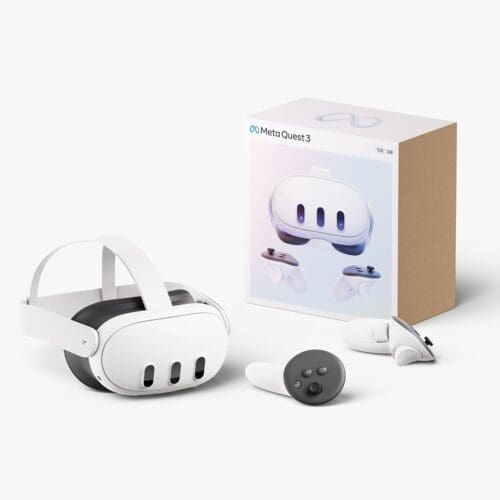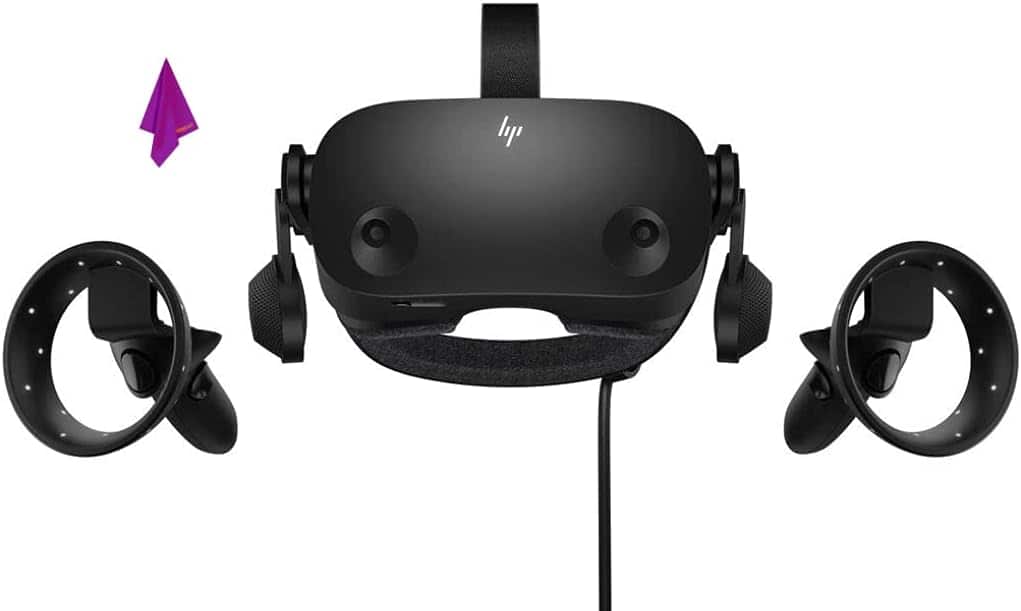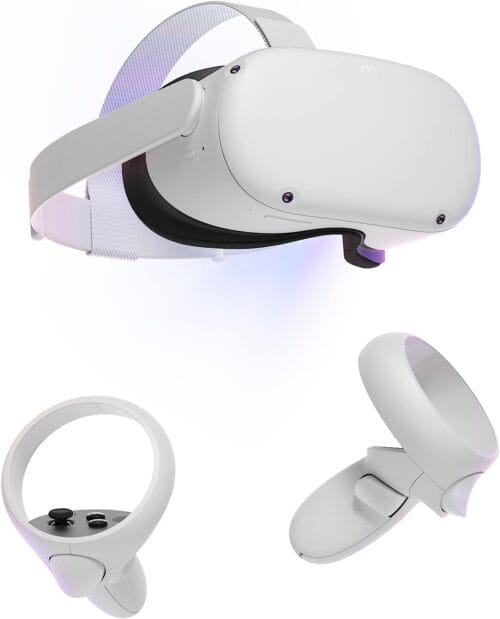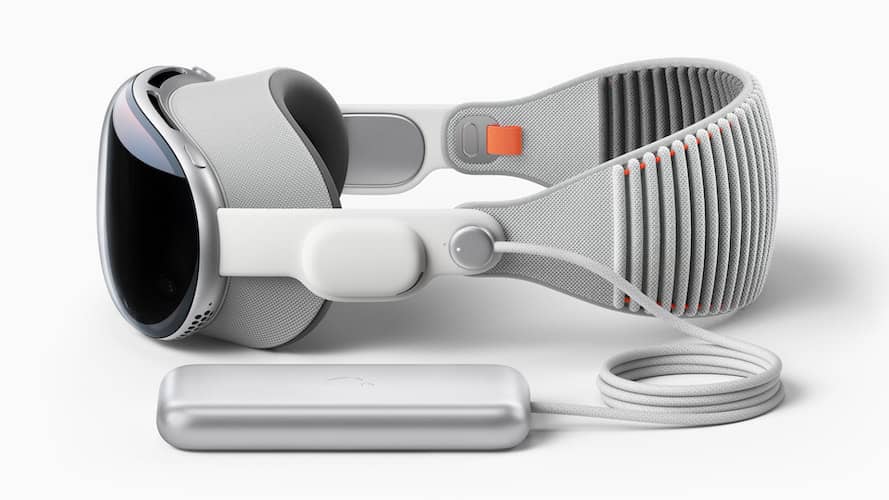Apple’s Vision Pro is getting a lot of attention, thanks in part to its unique features that change the way people think about VR. However, its high price tag puts it out of reach for the majority of consumers. Apple may release an affordable version of the Vision Pro in the future, but in the meantime, here are some alternatives that are within reach of the average buyer.
Best Vision Pro Alternatives
No VR headset has a unique outside display, M-Series processor, or intuitive interface like the Vision Pro. However, several headsets come close with their level of immersion and capabilities. The headsets below are the best options readily available today for their intended purpose. These headsets are not perfect, but they are an excellent way to get started with VR.
1. Best Overall: Meta Quest 3

The Meta Quest 3 is one of the closest VR headsets to the Vision Pro. Unlike many VR headsets on the market, the Quest 3 is an all-in-one device, just like the Vision Pro. This means it has a processor, battery, and all of the necessary components to use it without relying on a computer or gaming console.
However, it still doesn’t come close to the raw power that the M-Series processor gives the Vision Pro. The Quest 3 uses a proprietary Qualcomm processor that is based on mobile phone technology. This works surprisingly well for gaming, watching movies, and doing work, but occasionally its processor struggles.
The Quest 3 also has an excellent display, with 2064 X 2208 pixels per eye. That is pretty low compared to the estimated 3660 X 3142 pixel-per-eye displays used in the Vision Pro. However, it is a major leap over previous-generation headsets.
Unlike Apple’s corded battery pack on the Vision Pro, the Meta Quest 3 also has an internal battery. However, the main reason for choosing Quest 3 is its $500 price tag. Although it certainly isn’t “cheap,” it is 1/7th of the price of the Vision Pro.
2. Best for Gaming: PlayStation VR 2

The PlayStation VR 2 is another relatively new headset that emerged early last year. It is easily the best gaming headset, but it has some flaws. The PlayStation VR 2 is not a standalone headset. It relies on the PlayStation 5 video game console for processing power, and it is tethered to it with a cable.
The PlayStation VR 2 uses OLED technology in its displays, but its resolution is comparable to that of the Quest 3, which has 2000 X 2040 pixels per eye. The PlayStation VR 2 stands out because of its game library, with Horizon: Call of the Mountain being one of the best VR games ever made.
Unfortunately, the PlayStation VR 2 cannot do much other than play games. It cannot be used with a PC at the moment, but Sony has hinted at PC compatibility in the future. Similarly, there are few options to watch movies, socialize, or work in the headset.
The PlayStation VR 2 is relatively affordable at $550. However, if you don’t already have a PlayStation 5 console, that price quickly jumps to $1,000.
3. Best for PC: HP Reverb G2

The HP G2 is one of the best all around headsets for PC. It does not have an internal processor, so it must be connected to a computer via an included cable. One downside is that you need a powerful gaming PC with a GPU to run it.
Because the G2 works with a computer, it has few limitations. You can use it for gaming, watching movies, or even as a virtual workspace. Obviously, the cord is limiting for gameplay, but it does not require base stations like earlier PC VR headsets.
The G2’s display are really impressive at 2160 X 2160 pixels per eye. Also impressive is the price tag at $600. But that often goes even lower during sales.
4. Best Value: Meta Quest 2

There is no doubt that the Meta Quest 2 is the most affordable VR headset currently available. Surprisingly, it also has many capabilities that few headsets offer. Like its successor, the Quest 2 is an all-in-one headset that does not require any additional hardware to operate.
However, it comes nowhere close to the Vision Pro in terms of comfort, usability, and quality. The Quest 2 is several years old now, and its displays have aged quite a bit compared to the newest headsets. The resolution is 1832 X 1920 per eye, which is a drastic downgrade from the Vision Pro.
As of now, the Quest 2 supports the same apps as the Quest 3, but that will likely change in the future. Of course, the biggest difference between the Quest 2 and the Vision Pro is the price. The Quest 2 starts at $250, making it a great option for people who want to try out VR without committing thousands of dollars.
5. Best Graphics: Pimax Crystal

The Pimax Crystal is significantly less popular than the other headsets on this list, but it has incredible graphics that rival the Vision Pro. The headset is an all-in-one device that also works with PCs, like the Quest 2 and 3.
The Pimax Crystal’s resolution is 2880 X 2880 pixels per eye. That makes it the closest display to the Vision Pro on this list. However, it utilizes QLED technology with local dimming instead of the Vision Pro’s OLED screens. The biggest difference is that the Pimax has an extremely wide field of view compared to other headsets.
The downside to the wide field of view is that the headset is very bulky. You definitely wouldn’t want to take this headset on a plane, like you could with the Vision Pro. The Pimax Crystal is about half the price of the Vision Pro, so it certainly isn’t cheap. But its high-end displays help justify that price tag.
What Does the Vision Pro Do Differently?
Apple calls the Vision Pro a “Spatial Computer” rather than a VR headset. Despite the unique name, it does most of the things that a conventional VR headset like the Meta Quest 3 does. It does have a nice app layout that includes many of Apple’s top App Store programs modified for a virtual experience.
The most obvious difference between the Vision Pro and other headsets is the outer OLED display. It essentially allows the wearer to make eye contact with those around them.
Finally, the Vision Pro does not come with or require controllers. It relies solely on the user’s hand gestures, voice commands, and eye tracking for movement. All of these features allow the Vision Pro to work seamlessly in an office environment.
Is the Apple Vision Pro Worth it?
Whether the Vision Pro is worth it or not is still largely up for debate. Many people who did purchase it say that the price is justifiable because of the high-end components used. However, that doesn’t mean you should run out and buy it.
The Vision Pro definitely isn’t worth it for the average user. The majority of people don’t have $3,500 lying around to spend on a VR headset. With that said, the Vision Pro is the most advanced VR headset ever made. If you want the absolute best virtual experience available and money isn’t a concern, then the Vision Pro may be worth it.
